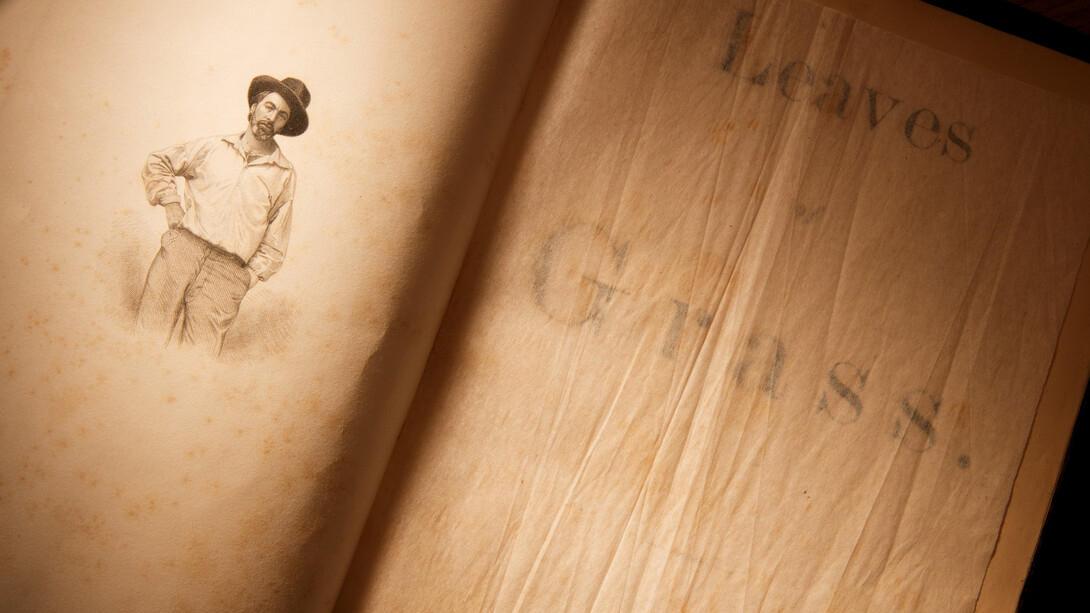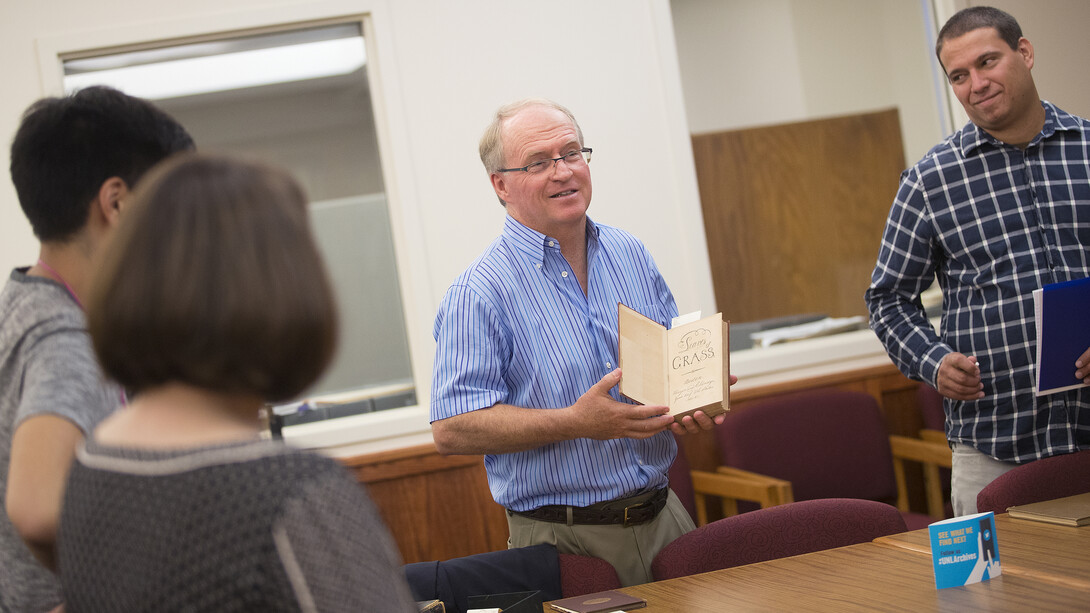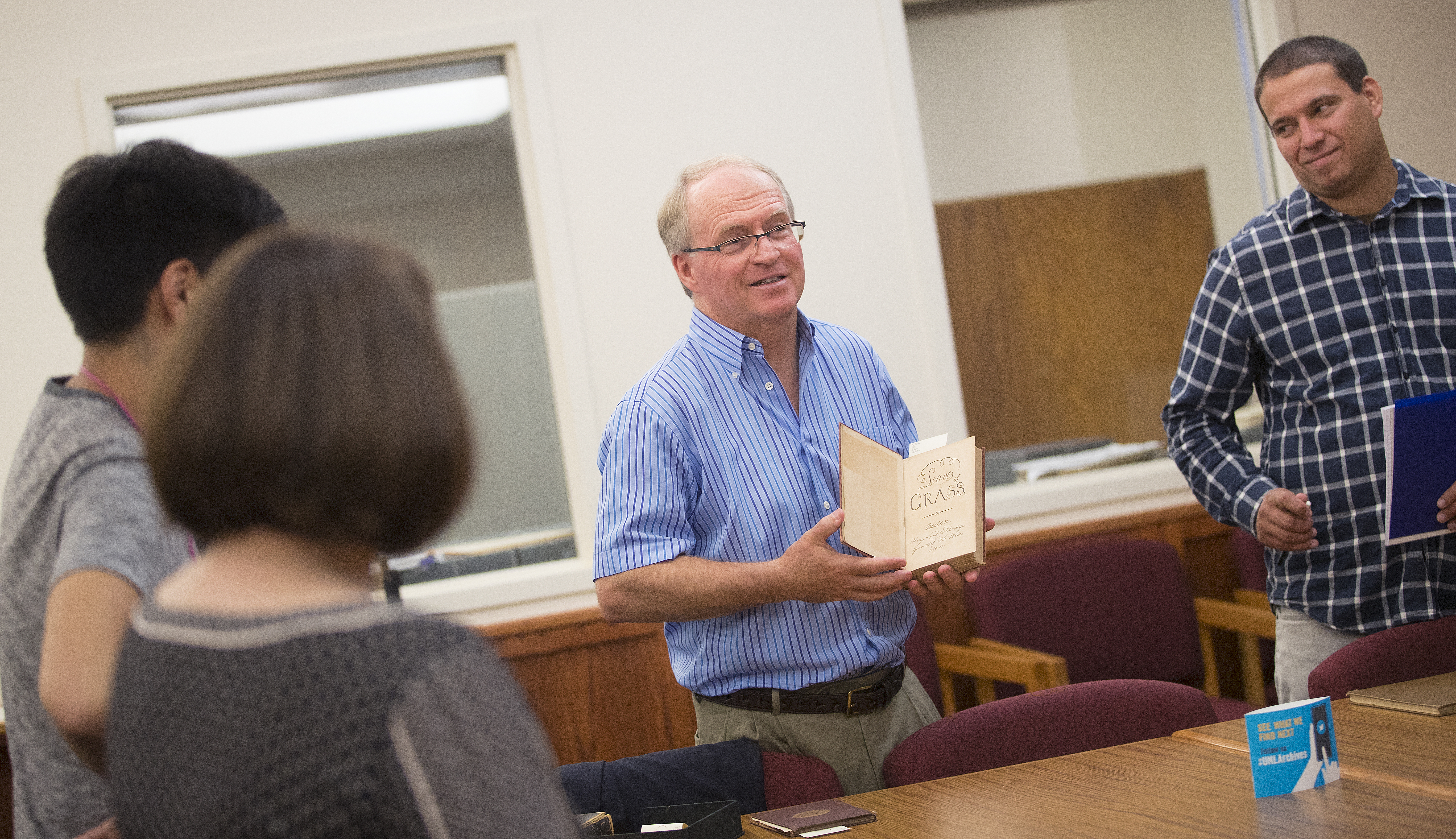
In an old shop that specialized in legal documents, Walt Whitman painstakingly published his first edition of “Leaves of Grass.”
Between setting type and hand-pressing words on pages, Whitman continued to revise the text, generating a remarkable variety of versions of the first edition released in 1855, a book long assumed to be consistent across its first copies. Now, researchers from the University of Nebraska’s Center for Digital Research in the Humanities are identifying and cataloging those variations.
Kenneth Price, Hillegass Professor of English and the center’s co-director, has earned a three-year, $300,000 grant from the National Endowment for the Humanities to examine at least 20 copies of the original 1855 edition of “Leaves of Grass.” The CDRH will start a digital variorum – a collection containing different versions of the text – on the Walt Whitman Archive. When completed, the project will record and provide background on each variation.
“We tend to think of books as stable objects, but you might think of his first edition as vibrating and humming. Instead of thinking about mechanical regularity, you need to think about change and fluidity to understand the 1855 (version),” Price said. “It is possible that no two copies are identical. There were 795 printed and we know of 184 copies still in existence. It’s possible that every one of those surviving copies is different.”
Famously, Whitman was constantly revising his book, which started with 12 untitled poems in the original edition and grew to include more than 300 in its final manifestation almost 40 years later. In 2000, an article in the Walt Whitman Quarterly Review was the first to acknowledge the so-called “stop-press revisions” among the original edition.
A new stage of research into the 1855 changes started there.
“What’s distinctive about our approach here is that we are highlighting and making accessible, really for the first time, the significant changes within the first edition itself,” Price said. “The book has received extraordinary praise and is widely regarded as the founding book of American poetry. One of the stunning things is how chaotic its production was, how last-minute so many of the changes were, how fluid he was in the writing process.”
Creating a standard book volume of the changes and the supporting research would be nearly impossible, Price said. Using digital technologies, Price, along with co-investigator Ed Folsom of the University of Iowa, and Nicole Gray, a Nebraska research assistant professor of English, will create an online tool that shows variations among the different copies.
Changes may range from the purposeful replacement of words to the accidental alteration of wording and punctuation.
“They were using a hand press, and setting all the type by hand,” Gray said. “Because of that, the pieces of type were a little more subject to moving around, some even falling off. They could only print a certain number of pages at a time, so they would print four pages on a sheet and then Whitman could proofread it as it came off. In some cases, he or the printers could stop the press and change the type.”
The variorum will also include Whitman’s earlier poetry manuscripts connected to “Leaves of Grass.” No known complete manuscript exists, but documents have been found that contain early workings of lines and stanzas from the work. Many of those documents have not been edited or annotated as being part of the “Leaves of Grass” creative process.
“You can see the revisions across these manuscripts in some cases and you can also see in some of these manuscripts, Whitman conceptualizing the book and thinking about how it was going to be put together and what the organization of the poems was going to be,” Gray said. “And since this is his central work, the one that he’s best known for in its various editions, it’ll provide a kind of backstory. It will be the first emergence of it in that way.”
A goal is to make it as accessible to as wide an audience as possible, Price said.
“We received a grant to create a scholarly edition, but we also have to keep in mind that Whitman is somebody who people are curious about at every level, going down to fourth- or fifth-graders and out to a large international audience,” he said. “It’s not just American literary scholars who care about ‘Leaves of Grass.’ ”










